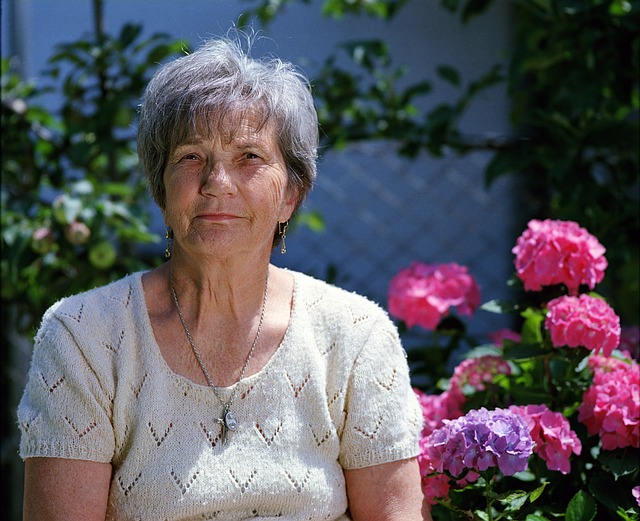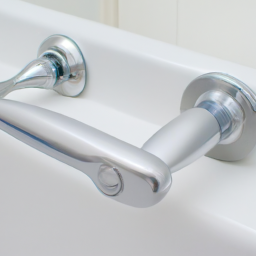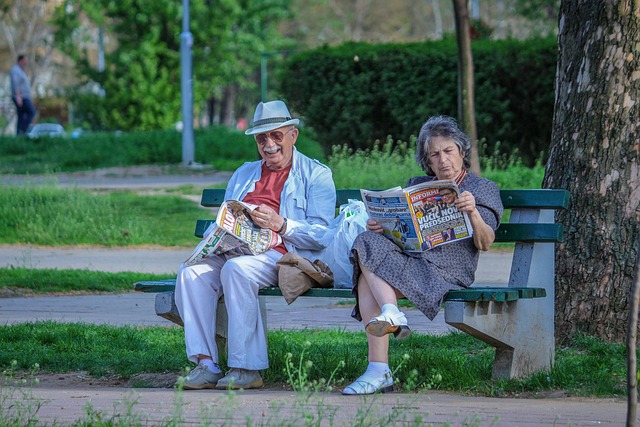Seniors deserve to feel safe and secure in their own homes, free from the worry of potentially life-threatening falls. This Comprehensive Guide To Fall Prevention In Seniors’ Homes aims to provide seniors, their families, and caregivers with the knowledge and tools they need to prevent falls in seniors’ homes. With a long-form article format, complete with a table of contents for easy navigation, this guide offers detailed and easy-to-understand information that even a 9th grader can grasp. From identifying fall hazards to implementing preventive measures, this guide is a valuable resource for anyone looking to ensure the safety and well-being of their loved ones. So let’s explore this comprehensive guide to fall prevention in seniors’ homes and take proactive steps towards a safer environment.

Understanding the Importance of Fall Prevention
Falls are a serious concern for seniors and can lead to significant injuries and complications. It is important to understand the causes and consequences of falls in order to take proactive steps to prevent them.
Common Causes of Falls
There are several common causes of falls among seniors. These include:
- Environmental Hazards: Cluttered pathways, loose rugs, and poor lighting can increase the risk of falls.
- Muscle Weakness and Balance Issues: Age-related muscle loss and balance problems can make seniors more susceptible to falls.
- Medication Side Effects: Certain medications can cause dizziness, lightheadedness, or drowsiness, increasing the risk of falling.
- Vision and Hearing Impairments: Poor vision or hearing can affect spatial awareness, making it easier to trip or misjudge distances.
- Chronic Health Conditions: Conditions such as arthritis, Parkinson’s disease, or stroke can affect mobility and increase the likelihood of falling.
Consequences of Falls
The consequences of falls can be severe and far-reaching. Falls can result in broken bones, head injuries, and even hospitalizations. In addition to physical injuries, falls can also have psychological effects, leading to a fear of falling and a loss of confidence in one’s own abilities.
Moreover, falls can lead to a decline in overall health and independence. Seniors who have experienced a fall may become more sedentary, contributing to a loss of muscle strength and balance. This, in turn, increases the risk of future falls and decreases their ability to perform daily activities, ultimately impacting their quality of life.
Assessing the Home Environment
Assessing and modifying the home environment is an essential step in preventing falls among seniors. Here are some key areas to focus on:
Arranging Furniture and Removing Hazards
Start by ensuring that furniture is arranged in a way that allows for clear and unobstructed pathways throughout the home. Remove any items that may pose a tripping hazard, such as electrical cords or loose rugs. Keep floors clear of clutter and maintain a tidy living space.
Improving Lighting
Good lighting is crucial for fall prevention. Make sure that all areas of the home are well-lit, especially staircases, hallways, and entrances. Consider installing motion sensor lights or nightlights in key areas to provide illumination during the nighttime hours.
Ensuring Safe Staircases
Staircases can be particularly hazardous for seniors. Install handrails on both sides of the staircase to provide support and stability. Keep stairs free of clutter and ensure that the steps are in good condition, without any loose or slippery surfaces.
Installing Grab Bars and Handrails
For additional support and stability in areas such as bathrooms and hallways, install grab bars and handrails. These can be particularly helpful when getting in and out of the shower, using the toilet, or navigating uneven terrain.
Securing Rugs and Floor Coverings
To Prevent slips and falls, secure rugs and floor coverings with non-slip pads or double-sided tape. Avoid using throw rugs or small mats that can easily bunch up or slide underfoot.
Promoting Mobility and Physical Fitness
Encouraging seniors to stay active and maintain their physical fitness is crucial for fall prevention. Here are some strategies to promote mobility and strength:
Encouraging Regular Exercise
Regular exercise is essential for maintaining muscle strength, balance, and flexibility. Encourage seniors to engage in activities such as walking, swimming, or tai chi. Always consult with a healthcare professional before starting any new exercise program.
Strengthening Lower Body
Developing strong leg muscles can significantly reduce the risk of falls. Encourage exercises that target the lower body, such as squats, leg lifts, or heel-to-toe walking. Simple activities like climbing stairs or walking on uneven ground can also help improve balance.
Maintaining Flexibility and Balance
Activities that promote flexibility, such as yoga or stretching exercises, help seniors maintain range of motion and reduce the risk of falling. Additionally, balance exercises like standing on one leg or using a balance board can improve stability and coordination.
Utilizing Walking Aids
If needed, consider the use of walking aids such as canes or walkers. These can provide extra support and stability when walking, especially on uneven surfaces or during periods of fatigue. Ensure that the chosen walking aid is properly fitted and regularly maintained.
Medication Management
Proper medication management plays a vital role in fall prevention. Here are some important considerations:
Reviewing Medications Regularly
Regularly review medications with a healthcare professional, ensuring that all prescriptions and over-the-counter drugs are necessary and appropriate. Some medications can have side effects that increase the risk of falls, so it is crucial to discuss potential risks and alternatives.
Avoiding Medication Interactions
Be aware of potential interactions between medications. Certain combinations can lead to dizziness, confusion, or other side effects that may increase the risk of falling. Ensure that all healthcare providers are aware of all medications being taken to avoid any potential complications.
Taking Medications as Prescribed
Follow the prescribed dosage and instructions for all medications. Taking medications as directed ensures that they are effective and minimize the risk of adverse side effects. It is important not to skip doses or take more than the recommended amount without consulting a healthcare professional.

Vision and Hearing Care
Regular vision and hearing screenings are essential for fall prevention. Here are some key recommendations:
Scheduling Regular Eye Exams
Regular eye exams are crucial for maintaining good vision and identifying any potential issues that could contribute to falls. Seniors should have their eyes checked regularly, and any changes in vision should be addressed promptly.
Using Corrective Lenses as Prescribed
Wearing the appropriate prescription glasses or contact lenses is important for clear vision, especially when navigating the home environment. Ensure that eyewear is regularly updated and that seniors are using the correct lenses as prescribed.
Maintaining Regular Hearing Tests
Hearing loss can affect balance and spatial awareness, increasing the risk of falls. Regular hearing tests help identify and address any hearing impairments. Seniors should be encouraged to use hearing aids if recommended by a healthcare professional.
Nutrition and Hydration
Maintaining a balanced diet and adequate hydration is crucial for overall health and fall prevention. Consider the following recommendations:
Eating a Balanced Diet
A diet rich in fruits, vegetables, lean proteins, and whole grains provides essential nutrients for maintaining muscle strength and bone health. Encourage seniors to incorporate a variety of foods into their meals and consult with a healthcare professional or nutritionist for personalized dietary advice.
Consuming Adequate Calcium and Vitamin D
Calcium and vitamin D are important nutrients for bone health. Seniors should ensure that they are getting sufficient amounts of these nutrients through diet and, if necessary, through supplements. Consult with a healthcare professional for specific recommendations.
Staying Hydrated
Dehydration can lead to dizziness and weakness, increasing the risk of falls. Encourage seniors to drink an adequate amount of fluids throughout the day, even if they do not feel thirsty. Water, herbal teas, and fresh fruits and vegetables are excellent choices to maintain hydration.

Maintaining a Safe Bathroom
The bathroom can be a particularly hazardous area in the home. Take the following steps to ensure safety:
Installing Grab Bars and Handrails
Installing grab bars and handrails in the bathroom provides stability and support when getting in and out of the shower, using the toilet, or navigating slippery surfaces. Ensure that these fixtures are properly installed and securely attached to the walls.
Using Non-Slip Mats
Place non-slip mats inside the bathtub or shower to prevent slipping when the surfaces are wet. Additionally, use non-slip mats on the bathroom floor to provide traction and reduce the risk of falls.
Ensuring Adequate Lighting
Good lighting is essential in the bathroom to clearly see potential hazards and maintain balance. Ensure that the bathroom is well-lit, using natural light and/or additional lighting fixtures as needed.
Using Raised Toilet Seats
Raised toilet seats can make it easier for seniors to sit down and stand up, reducing the strain on their legs and minimizing the risk of falls. Consider installing a raised toilet seat or using a toilet seat riser if necessary.
Installing Shower Seats
A shower seat provides a secure and stable surface for seniors to sit while bathing, reducing the risk of slips and falls. Install a shower seat that is designed for safety and stability, taking into account any specific needs or limitations.
Wearing Appropriate Clothing and Footwear
The clothing and footwear seniors choose to wear can greatly impact their safety and balance. Consider the following recommendations:
Wearing Non-Slip Shoes or Slippers
Choose footwear with non-slip soles to provide better traction and stability. Avoid shoes or slippers with worn-out soles or heels. It is also important to ensure that footwear fits properly and does not cause any discomfort.
Avoiding Loose or Baggy Clothing
Loose or baggy clothing can catch on objects or obstruct movement, increasing the risk of trips and falls. Encourage seniors to wear properly fitting clothing that does not impede their mobility or balance.
Using Proper Footwear for Outdoor Activities
For outdoor activities such as walking, hiking, or gardening, it is important to choose appropriate footwear. Opt for sturdy shoes with good traction and ankle support to minimize the risk of slips and falls on different terrains.
Fall Prevention Strategies for Caregivers
Caregivers play a crucial role in fall prevention. Here are some strategies for supporting the safety and well-being of seniors:
Understanding the Role of Caregivers
Caregivers should have a clear understanding of fall risks and the importance of prevention. By recognizing potential hazards and implementing appropriate strategies, caregivers can help create a safe environment for seniors.
Educating and Empowering Seniors
inform and educate seniors about fall prevention strategies and the importance of staying active and following safety precautions. Empower them to take an active role in their own fall prevention by providing information and support.
Providing Regular Support and Check-ins
Regularly check in with seniors to ensure their safety and well-being. Offer assistance with daily activities, such as home modifications or accompanying them to medical appointments. Regular support and engagement can greatly contribute to fall prevention efforts.
Conclusion
Fall prevention is of utmost importance for seniors’ safety, well-being, and independence. By understanding the causes and consequences of falls, assessing and modifying the home environment, promoting mobility and physical fitness, managing medications, maintaining vision and hearing care, ensuring proper nutrition and hydration, creating a safe bathroom, wearing appropriate clothing and footwear, and implementing effective caregiver strategies, we can significantly reduce the risk of falls. Taking proactive steps and being attentive to fall prevention measures will help seniors maintain their quality of life and continue to enjoy their daily activities with confidence and independence. Remember, a safe home is a happy home!


